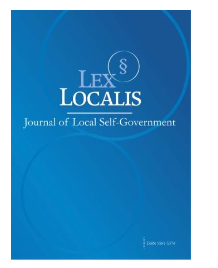DEEP LEARNING-BASED FAULT DETECTION AND CLASSIFICATION IN POWER DISTRIBUTION NETWORKS
DOI:
https://doi.org/10.52152/vdwhe059Ključne besede:
Fault Detection and Classification (FDC), Power Distribution Networks, Deep Learning, Convolutional Neural Networks (CNN), Recurrent Neural Networks (RNN).Povzetek
Fault detection and classification (FDC) in power distribution networks is a critical task for ensuring the reliability, stability, and efficiency of modern power systems. Traditional approaches based on signal processing and classical machine learning have contributed significantly but face limitations in handling noisy, nonlinear, and nonstationary fault signals. With the rapid advancement of artificial intelligence, deep learning (DL) has emerged as a transformative solution by enabling automatic feature learning, robust fault classification, and real-time applicability. This review paper systematically analyzes the progression of FDC techniques, from traditional methods to advanced DL architectures such as Convolutional Neural Networks (CNNs), Recurrent Neural Networks (RNNs), Autoencoders, Graph Neural Networks (GNNs), and hybrid models. It further discusses benchmark datasets, performance metrics, and the applicability of these models in smart grids, renewable energy integration, microgrids, and IoT-enabled environments. Key challenges—including data scarcity, computational costs, overfitting, and cybersecurity concerns—are examined alongside emerging research directions such as transfer learning, explainable AI, federated learning, and digital twin integration. The review highlights how DL-based approaches are reshaping FDC by enhancing accuracy, scalability, and resilience, offering a promising path toward smarter and more sustainable power distribution networks.
Prenosi
Objavljeno
Številka
Rubrika
Licenca
Avtorske pravice (c) 2025 Lex localis - Journal of Local Self-Government

To delo je licencirano pod Creative Commons Priznanje avtorstva-Nekomercialno-Brez predelav 4.0 mednarodno licenco.








